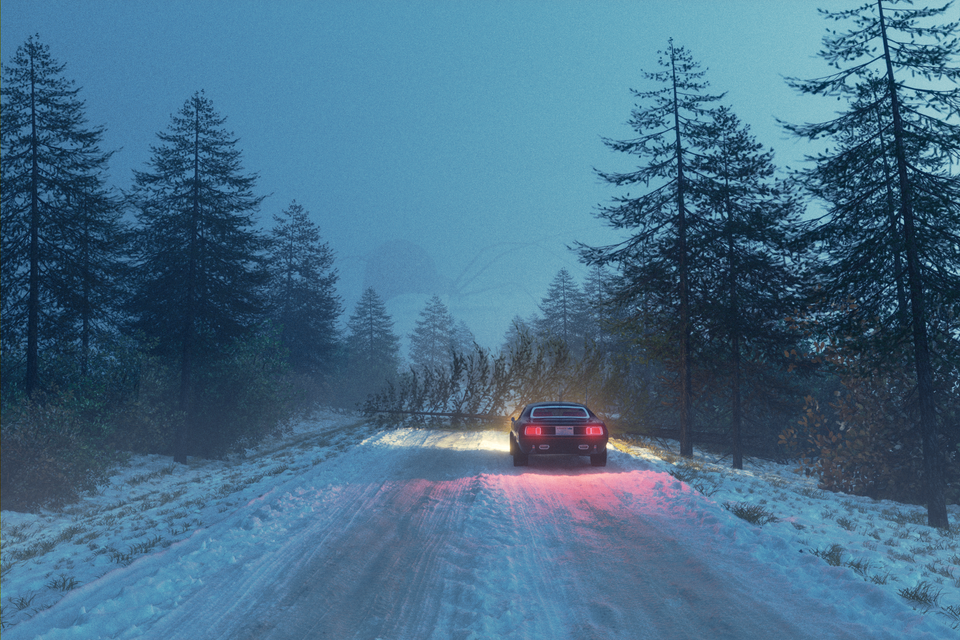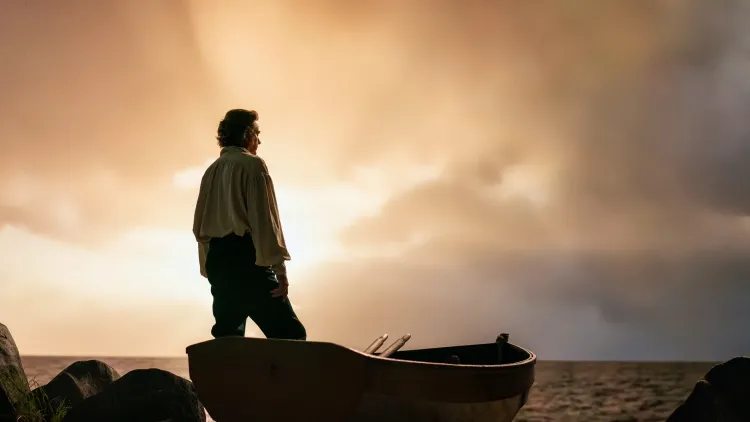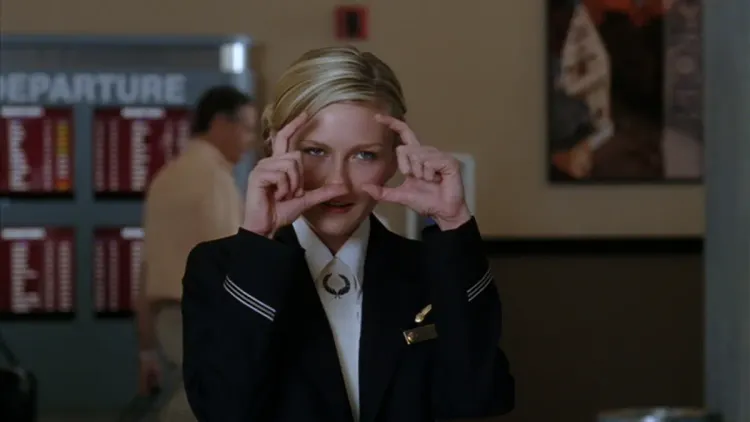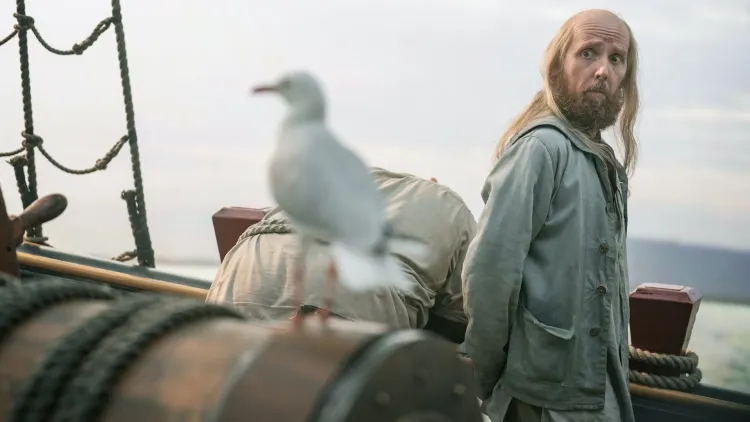The first time I screwed up

On some base level, what I most crave is validation. I am really happy that lots of people love to read my writing, but what I’d really like is a Pulitzer Prize, and if I ever get a TV show or movie made, you’d better believe that I’m going to be coming for that Emmy or Oscar.
Those of us who write things are not supposed to admit this. The work is supposed to be its own reward, the chance to express ourselves or help people understand their world better a prize in and of itself. But prizes are really nice, and barring incredibly unusual circumstances, they won’t take that prize away from you. It’s a sign that at one point, you did something enough people thought was good enough to give you a trophy. And that’s not nothing.
Working in digital media — too often at a disadvantage when it comes to long-standing journalism prizes like the Pulitzers — has taught me at least a little bit about how arbitrary these awards are, which has decreased my sense that my self-worth would be boosted by winning one. But every year we enter a new journalism prize season, I’m reminded of the first time I tried to win a journalism prize and how badly I botched the story involved.
(Beyond here, there’s a content warning for suicide.)

During my days as a college journalist, one of my professors handed me a story she had found particularly meaningful. It was a profile of a student who had died on the campus of some other school (I don’t even remember which), told in a series of vignettes from their life. It quoted the people who knew the student best, but it was primarily a story about this girl and her life and the illness that finally took her. (I seem to remember it was cancer, but I am probably mistaken.)
It had cleaned up at the college journalism awards the year before, and my professor thought I could write something similar. Even at the time, I was inching away from news and toward features. I was the student newspaper’s managing editor — about to become the editor-in-chief — and I was interested in using journalism to tell great stories about the world around me, yes, but also to fuel my artistic ambitions. I didn’t just want my stories to be true; I wanted them to be beautiful.
It was a hubristic approach to my work, but I was also in my early 20s, a time rife with hubris. And when my professor handed me the story, I started to think about how I could do my own take on it. (I am going to keep a lot of details of what follows vague, in hopes of not reopening this particular set of wounds.)
Roughly a year prior to me being handed this story, a troubled high-school student from the town where I went to college had driven his car onto campus, roaring down one of the main thoroughfares in the dark, early morning hours, driving full-tilt into the wall of one of the buildings on campus. The car was destroyed. He died. The building itself had a black, scorched scar on it for years to come. (It has probably faded by now.)
The death was ruled a death by suicide. The story that emerged was almost a cliche — his girlfriend had broken up with him, and when she no longer wanted anything to do with him, the kid drove his car into a building, hoping he would die. He wasn’t a student at my university, but plenty of my fellow students there knew him, mostly because the school had plenty of locals attending. So the death hung around the school like a fog for weeks after, not least because that scar on the building seemed to only get worse with time.
You can likely see where this is heading.
I got in my head that I should do my own version of the piece my professor handed me profiling this kid, showing what his life had been like. The idea was that it would become a larger piece about the uneasy relationship between the university and the town containing it, as well as a piece about mental health awareness and how whatever mental health care system existed in that town in the early 2000s failed this kid.
As an idea for a piece, this wasn’t a bad one, honestly. It was a little overambitious for something that probably needed a magazine length to really work, but the editor of our life and style section assured me I could have a double-page spread. (It was a tabloid, so the double-page spread was really one full page in a more traditional broadsheet.) Had I stuck to my original plan, I probably would have written something really good, maybe even something awards worthy.
But I didn’t just want to tell a story about a troubled kid and the end of his life. I wanted to tell a beautiful story that might win me something. And I was conscious at all times of how similar the structure of what I cooked up was going to be to the story that inspired it. My story, too, was going to be constructed of vignettes. My story, too, was going to speak to the kid’s family. And my story, too, was going to be about the hole the death of someone so young leaves behind.
So I wanted to differentiate my story from the earlier one somehow. And because I did, I made one crucial error in my reporting: I only spoke with the kid’s family. They were gracious and helpful, and they told me some wonderful stories about the boy’s life. They let me sit with them for over an hour, reliving something that had to have been painful for them, and they then sat for a while longer when our photographer came to take their picture. They painted a full picture of a boy they had known to be bright and happy until adolescence made him moodier and a bad break-up made him full of both sadness and rage.
Still, they said, they didn’t quite understand how he could have killed himself. It just didn’t square with the boy they knew. Not at all. Why was he out that morning? Why did he overdrive the icy roads? Why didn’t he talk to someone?
It is obvious to me now that the questions these people were asking and seeking answers to were unanswerable. They were not questioning the official record of events. They weren’t even really questioning that their son had killed himself. They were questioning where the schism happened, what caused him to break from the boy they knew and become the teen they no longer understood. “Why would he do this?” wasn’t an attempt to unravel some larger mystery. It was the question anybody asks when someone they love takes their own life.
But stupid early twentysomething me heard “Why would he do this?” and thought perhaps the official story was wrong.
I dug up and re-read the piece before writing this newsletter (thanks Mom, for assembling that clips file), and it’s honestly less conclusive than I thought. I definitely raise the idea in the reader’s head that maybe this was a simple accident, caused by overdriving icy roads (despite the lack of marks to indicate that he ever tried to brake), rather than something deliberate. But if you were being generous to my writing — and I weren’t telling you right now that I really did briefly convince myself he didn’t kill himself — you might think this was a literary technique, designed to help the reader understand why the kid’s parents were so shaken by his death.
I mostly adhered to the idea that he had, indeed, killed himself, because that was the police’s official conclusion, and we didn’t have any real evidence to deviate from it. But I really did, deep down, make you want to believe this boy was a saint, taken too soon, who drove too fast on icy roads on a foggy morning and somehow didn’t see the giant building looming up ahead. Maybe he didn’t know the campus that well, I offered. Maybe he thought he was on a different street that ran parallel to the one he died on, which would have kept going past the campus, rather than ending in the side of a building. (Left unexamined in this thought is that the parallel street had plenty of stoplights and more traffic, so he almost would have had more of a chance of having an accident.) Maybe he was just over-tired. Maybe, maybe, maybe.
I don’t know why I fell for this idea. I think maybe I saw how sad the parents were and wanted to offer solace. Or maybe I wanted to believe suicidal ideation was a demon that could be beaten back. Or maybe I just wanted to win a prize by complicating an official narrative with something that made the police conclusion feel more ambiguous than it was.
The thing is, even in the most charitable reading of my article, the one where I’m trying to introduce doubt in the reader’s mind to simulate the way a parent might ask “Why?”, the reader doesn’t have to travel very far to have their own answer to why a parent might be devastated at a child’s death. It’s a primal emotion most of us — even those of us who don’t have children — carry deep in our guts, a violation of the natural order that says parents should not outlive their children. I was creating a story out of whole cloth, when all I really needed to do was write about what it means to feel grief so acutely.
And in the process, I now realize, I missed an even bigger story.
You maybe noticed how quickly I glided by the girlfriend whose breakup precipitated the kid’s slow slide in the official version of the narrative. I think in 2019 that detail stands out in a way it didn’t as much in the early 2000s. Suffice to say that I found things in my reporting of the story that I didn’t follow up on, loose threads that I will never, ever be able to tie up because so much time has passed. Now, I wonder what the girl’s perspective on this might have been. How did she feel about the break-up? About the boy who died? I should have asked.
After the piece was published, I got a lot of comment on it from people who had known the kid, and most of those people said something along the lines of, “You really captured who he was.” These were people who were still grieving the loss of a friend or family member and who were glad my article existed to resurrect the boy they remembered. And as a piece of writing, the article does do that. The little boy, cheerful and cherubic, whose outline was filled in for me by his parents shines out from the pages of the article. The brooding teenager who still cared for his friends is there too. If you wanted to believe that he was a good kid — even if you thought I got buffaloed by my own brain trying to turn an obvious death by suicide into a conspiratorial cover-up — my piece gave you plenty of room to believe that.
I still want to believe he was basically the kid his parents told me about. Reading the article, I am struck by how much what was good about him comes across. No matter how troubled his ending, he had been a good son and a good friend.
But two emails I got in the wake of that piece have haunted me ever since.
The first was from a friend of the girl at the center of the break-up. All it said was “I am [name’s] friend, and it was nothing like that.” I never followed up on it, because as far as I was convinced, I had finished the story. And because I didn’t, I can never know what she meant by “nothing like that.” All I have is that and a moment when the boy’s parents expressed their bafflement that this girl meant so much to their son, when they hadn’t really been aware of the depth of his feelings for her.
Because I never followed up, I can’t imagine what “nothing like that” could have meant. Most likely, it was a wholly innocent email from a friend concerned that my story wrote off the girl at the center of this tale a little too quickly. The break-up might have really just been a bad high school break-up. The girl probably wanted to be on the record, and I didn’t even try to contact her.
But I don’t have to travel too far to imagine what the friend might have otherwise meant by “nothing like that.”
The second email was from the boy’s parents, who thanked me for the article and for giving their son a story that was more dignified than the news reporting around the time of his immediate death. But at the end, they said, “You can never really understand why someone commits suicide. Maybe we never will.” And I realized in that moment that everything I thought they had been asking, the questions I thought I was supposed to be pursuing, was rhetorical. They knew their son had killed himself. They didn’t know why, and they couldn’t know why. And even if they wanted to, would they? I had presented the version of their son they wanted to see, rather than tried to understand the one that actually existed.
As pieces go, the article is not journalistic malpractice. It more or less accomplishes its goals, and it’s very well written for a college student. But it is also fundamentally hollow at its core, missing several real stories in pursuit of some other truth.
I did not win any awards for it.

A few weeks ago, I was having dinner with someone who’s considering bringing me on to a project as a collaborator, and he said that one of the things he likes about both my criticism and my creative work is how obsessed I am with the idea that there is no one official story, that a story changes depending on who’s telling it, that maybe the thing we need to understand is how hard it is to find “objective” truth.
And as I’ve written this, the more I’ve realized that one of the few things I’ve actually put out into the world creatively — the first season of Arden — is a story about journalists who become so distracted by the conspiracy theories around a mysterious disappearance that they miss the much bigger story lurking beneath its surface until it’s too late. When they realize they’ve become part of the story in a way that does not reflect well on them, they can’t escape the wheels they’ve already set in motion. I wasn’t consciously thinking about the story I wrote in the early 2000s when I sat down to write the Arden finale (where all of this happens). But in one way or another, I’ve been thinking about it ever since I reported it and wrote it.
As mistakes made by college journalists go, mine was ultimately a minor one. It provided comfort to the family and friends of a dead boy, and that might be a good thing. Nothing was going to bring him back, but reading my article maybe made his presence feel a little more real for these people, at least for a few moments.
But the story of this boy’s life and death had so much more to it, and I never really scratched the surface. I wonder what the story would be if I had talked to the ex-girlfriend or one of her friends. I wonder what it would be if I had talked to the police officers who responded to the scene of the accident. I wonder what it would be if I had talked to literally anybody else involved.
I don’t think what I did was “wrong,” per se. I didn’t set out to tell the whole story about this kid; I set out to eulogize him for a college campus that had thought of him as a weird footnote, a thing that had happened one time and then drifted away into the memory. And as eulogies go, the story is a good one (if it gets distracted here and there by obviously incorrect theorizing).
But there were so many other stories I might have told, lurking beneath the surface of the one I set out to tell. I was lucky to learn a lesson it often takes journalists decades to internalize on one of my very first major articles: If you’re just reporting the story you thought you were going to report, you probably missed something.
I still haven’t won a journalism award. I’m more sanguine about this situation now. I know that what I do is pretty inconsequential when compared to, say, reporting on the workings of Washington. But I also look around me every day and see stories that never once stop to question a received narrative. They are stories that try, mightily, to reach already agreed upon conclusions. Are these stories merely gunning for prizes? I can’t say. I am not the person writing them. But it’s not hard to read yet another piece that seems to be working backward from its conclusion and wonder if the writer has their eye not on truth but glory.
Read me: One of my absolute favorite newsletters out there is by my friend Grace, who publishes under the moniker Gem of Amara. She’s a sharp thinker on TV and film, and even if I am sick of hearing about Star Wars, she’s one of my favorite writers about Star Wars. Her most recent issue is about Return of the Jedii.
A year after Empire Strikes Back, George Lucas’ producing effort Raiders of the Lost Ark was released. It didn’t make as much money as Empire, but how could it when it wasn’t a Star Wars sequel? What it did manage was to give everyone something they liked. Raiders played the hits. It satisfied the masses. It did so beautifully, but it was at its core a crowdpleaser in a way Empire wasn’t. And so we have Return of the Jedi.
From an opening act that seems to cram in every creature on Tatooine we didn’t see in the Cantina Bar to the Speeder Bike chase to once again blowing up the Death Star, Jedi is an abundance of treats from start to finish above all else. It’s Star Wars for the Reagan era, its qualities more than ever dictated by market forces and a desire to give the audience value for money. The year after Jedi’s release, the biggest films would be Beverly Hills Cop and Ghostbusters. Any doubts that Star Wars had ended the New Hollywood era had been blown out of the water. This was a film industry for the market, by the market. Any interest Lucas once had in an anti-corporate alternative to this was a distant memory by now. Star Wars had gone neoliberal.
Watch me: It’s getting Christmasy all around us, isn’t it? And if you’re like me, you love to watch Christmas movies. Well, if you’ve never seen them, The Holly and the Ivy (a lovely and somber British drama about a family after World War II), Remember the Night (a surprisingly sexy ‘40s romcom about a DA who takes an accused criminal home for the holidays), and A Christmas Tale (a 2008 French film about a family gathering for Christmas) are all beautiful movies that you should watch this season! The first two are available on WatchTCM (Turner Classic Movies’ website), and the last is a Criterion release.
And another thing… I’m really proud of the gift I got my wife this year, so please check out this tweet in which she shows it off. I get to gloat a little, right? (In general, being a girl at Christmas is very difficult because I have legitimately 500 more people I now have to get gifts because I love them just that much. Somebody should have mentioned this to me, before I started getting ideas in my head…)
This week’s reading music: “It’s Christmas, So We’ll Stop” by Frightened Rabbit
Episodes is published once per week and is about whatever I feel like that particular week. Suggest topics for future installments via email or on Twitter. Read more of my work at Vox





Member discussion